Adrian Tippins provides an essential guide to vanes
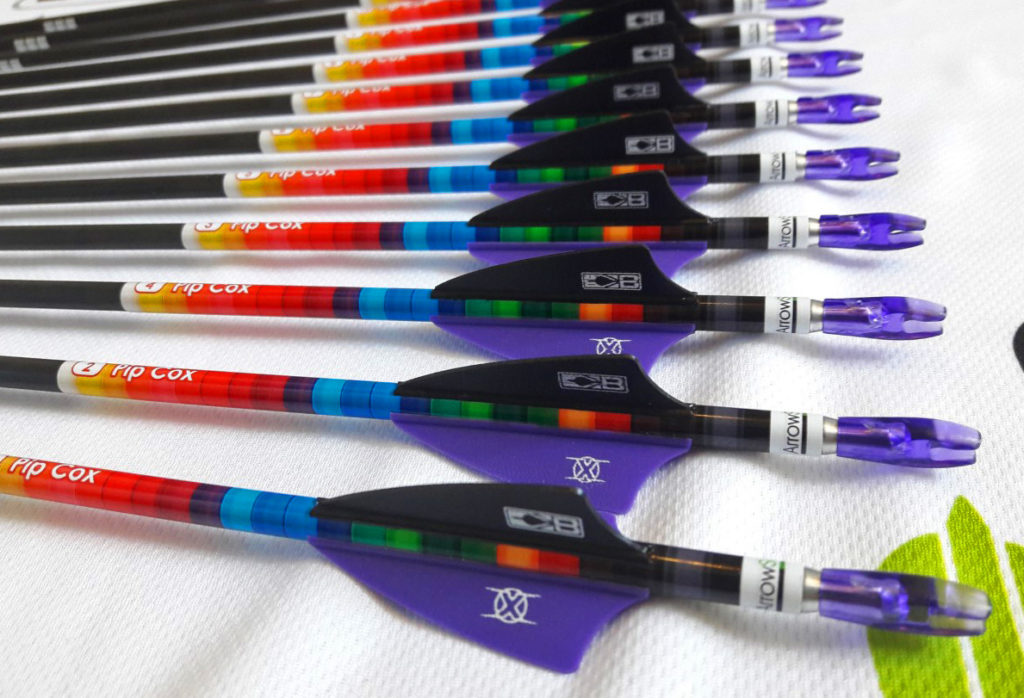
Introduction
Whether we’re shopping online or in store we are affronted by hundreds of vanes of all sizes and shapes. This can often lead to option paralysis. The confusion leads a lot of archers of all levels to make poor decisions when it comes to making a purchase.
Having a basic grasp of a few key facts and physics principles will put you in a position where you’ll be able to short list your new vane candidates.
Incidentally, you might prefer to call them fletchings – and that’s fine too. Fletchings is a much older word and is more commonly used in Britain, whereas vanes is the universal term in North America and much of the rest of the world. North America is where a lot of them are made these days, and we’ve decided to call them vanes throughout this article for consistency.
Before considering the merits of vanes it’s essential to understand what their function actually is. Vanes stabilise, steer, spin and dampen the oscillation of the arrow.
Just like the tail section of an aircraft, the vanes are flight control surfaces that control yaw (side to side) and pitch (up and down) of the arrow in order to produce stabilised level flight.
These are just a few of the terms that will get bundled together to form the subject of aerodynamics. Although this is a very complex subject we can distil everything down into a few elements that are easy to understand and remember.
The faster an arrow travels the less stabilisation it needs. The slower it goes, the more surface area is needed to maintain stabilised flight due to the loss of forward momentum.
The larger the flight control surfaces are the more stability and steering they offer. This sounds all well and good but it comes at a price. More surface area means a higher drag coefficient. Drag will slow the arrow down and effect sight marks and trajectory of the shot.
An arrow is more stable when it’s spinning. This is why most long distance projectiles are “rifled” to increased long distance accuracy. Many archers achieve this with the use of spin wings, which is an entire article in itself. Nevertheless, it is important to understand the principles of regular parabolic or shield vanes on arrows, before you complicate things any further.
Before we move on a look at the differences between types we should take a moment to understand the differences between indoor and outdoor shooting and what demands the two disciplines place on vanes.
Outdoor shooting requires low drag vane options as the distances are up to five times greater then those indoor. Good down range arrow speed is essential for long range accuracy.
Weather is a factor outdoors and the distance means that the arrow will be airborne for a long time. This increases the chance of the weather factors interfering with the flight course. Outdoor vanes need to be able to deal with air currents efficiently.
In a complete reversal, indoor shooting requires the maximum amount of possible steering and stability. The difficulty with indoor shooting is that there is very little if no time for an arrow to get settled before hitting the target due to lack of distance.
Therefore, we need to do everything we can to slow the arrow down and stabilise the arrow as quickly as possible. To do this we need to utilise a very high drag configuration. Obviously sight marks and weather are of no concern to us indoors.
Size, shape and profile
We can now see that the smaller/shorter vanes are going to be more suited to outdoor shooting and the longer/taller vanes are going to be of benefit for indoor shooting. Taking arrow speed into account we can deduce that vanes on an outdoor compound arrow will normally be quite short. A typical length for a compound vane would normally be 1.87” to 2.00”.
Such lengths are designed to allow the vanes have a nice “S” curve when fletched in helical format These vanes are also very low profile at just over a ¼ of an inch in height to mitigate cross wind drift. Recurve arrows lack the speed produced by their compound counterparts so their arrows need a bit more stabilisation.
Plastic vanes for recurve shooting tend to be slightly shorter than compound vanes, at 1.75”, but taller in height. When shooting indoors it’s always good to have the largest and longest vane possible to increase stabilisation. It’s not uncommon to see recurve arrows sporting 3.00” and compound arrows using 4.00” vanes.
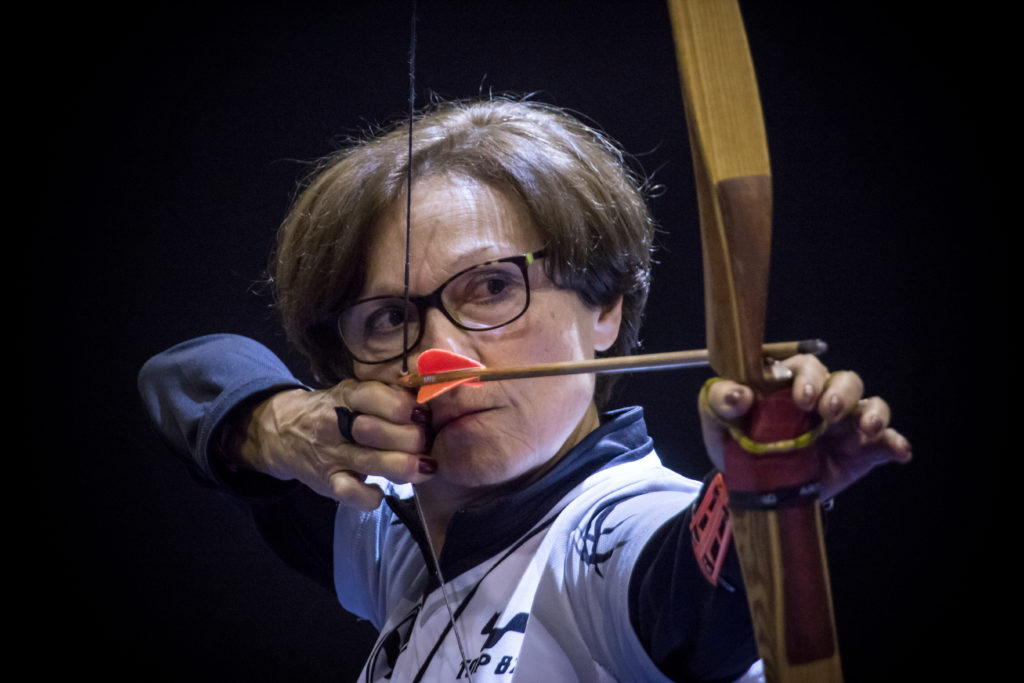
You do need to be careful not to encounter bow clearance issues. This can be especially problematic for recurve shooters but can still affect compound shooting depending on the type of launcher used. Most vanes can be made to give a little more stability by placing them in helical or offset format as this increases drag and rotation.
As arrows can drastically differ in length from one archer to another it’s really important to remember that what suits one might not suit another. When I’m talking with customers I’m always thing about proportional stabilisation too. For example a 1.75” vane may well be fine for a 28” arrow but it might be unable to successfully stabilise a 31” arrow.
A long arrow may well benefit from a vane of increased length. A rule of thumb is the longer the vane, the more stable, but the longer the vane the more it will cost you in feet per second speed.
It comes down to whether you want a more stable shooting shaft with a certain amount of ‘wiggle room’ or a faster shaft with less wiggle room. In situations where the draw length can vary, such as with trad and barebow shooters, stability of the arrow may become more important.
Whilst plastic vanes come in many shapes, broadly speaking they can split them into two major aerodynamic groups: shield and parabolic. A simple summation is that shield-cut vanes provide slightly more stability, and perhaps a accurate arrow, at the cost of a small amount of speed. (See the boxouts for more details on parabolas and shield).
Blazin’ Squad
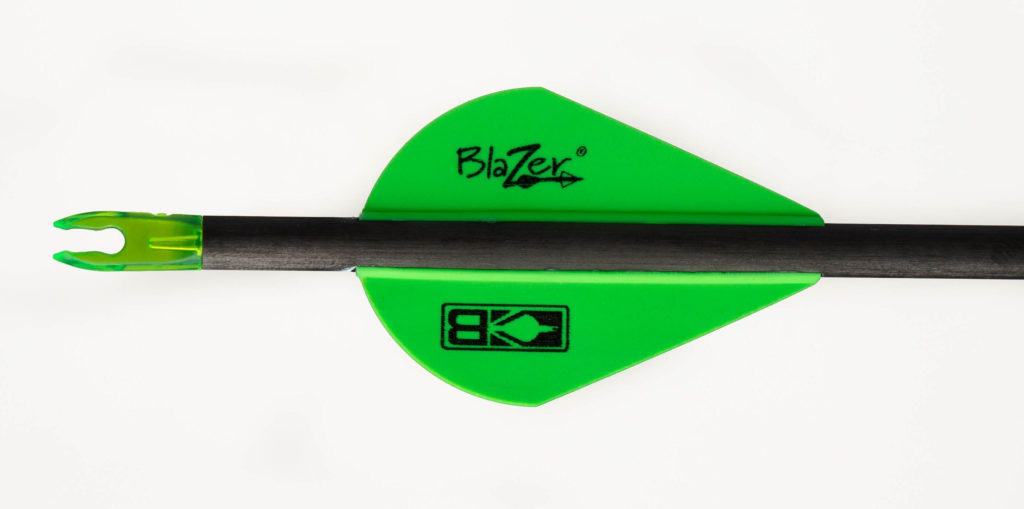
Some vanes such as the Blazer by Bohning are worth mentioning. Although these were developed primarily for compound hunting arrows, they do have a place in target archery especially in the Field Archery discipline.
Blazer vanes employ Delta Wing shape that has a steep leading edge. This shape is used on most jet fighter aircraft. These vanes are designed to make an arrow shoot at the flattest possible trajectory for the longest amount of time. This is an advantage if you’re not totally sure of the target distance like on an unmarked field round.
Check the feet
There are a few important considerations that don’t immediately spring to mind when choosing vanes. Firstly, you should take a little bit of time to think about the design of the foot of the vane. There is a massive difference in dimensions and shapes.
Some types can make for some really awkward application problems. For example, a wide foot with lots of surface area will be great for getting a good bond, but it may be difficult to get the foot properly seated when fletching helical or offset on a thin shaft.
Some brands of vane are made with a central gully in the foot which has the ability to hold glue. This can assist with neat fletching and bonding. Those vanes that don’t have the gully simply squeeze out all the glue under the pressure of the clamp.
Some manufacturers have added additional shaping such as ribbing to the side walls of the vane to add stiffness in some key areas. Ribbing on vanes can assist with channelling airflow and minimising disruptive vortex streams. It’s really worth giving vanes close inspection.
If you’re arrow building is of the forensic standard where you’re counting every single grain, you’ll definitely be interested in the physical weight of each vane. The weight of the vanes will have some effect on the arrows balance point.
More weight on the front usually makes for a more stable arrow. More weight aft often makes for better trajectory and sight marks. Information regarding the physical weight of vanes can always be found on the manufacturer’s website.
Material
In my opinion, memory and durability are the two most important factors for a vane material. Memory ensures the vane returns to it’s normal pre-determined moulded shape after being constantly distorted. Arrows get a lot of abuse so the vanes need to be pretty tough to resist damage and breakdown under stress, impact or friction.
Manufacturers are pretty secretive about the formulation of the compounds they use. That said, most plastic vanes are either silicone or urethane based. There are some hybrid materials that have added compounds such as glass micro-beads. Often the urethane vanes will have a more slick and shiny finish. The materials will all have varying stiffness values.
Whilst we’re on the subject of materials and formulations is worth mentioning the importance of getting the right glue for the vane and surface. Some vanes are really fussy and only like one single type of glue. A lot of manufacturers will coat the feet of their vanes in a chemical activator or accelerant.
Quite often these will be formulated to work with their own brands of adhesive which are usually CA (Cyanoacrylate) based. Lots of fletching glues are solvent MEK (methyl-ethyl-ketone) types and aren’t compatible with a lot of pre-coated vanes.
In order to use a MEK adhesive on a CA prepared vane the foot has to be thoroughly cleaned with alcohol or acetone. Do a little research into chemical compatibility long before making a purchase.
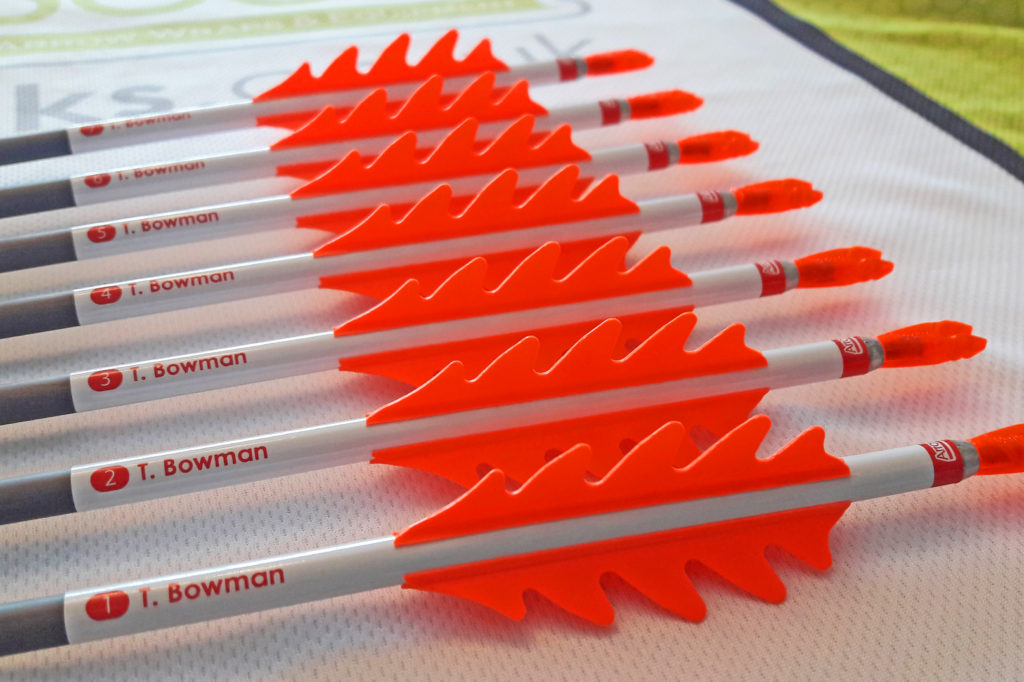
All Round View?
I often get asked if a great all-round vane exists. Personally I think that it does. If I was asked to only have one type of vane but in all sizes to use on all of my customer’s arrows I would choose The Bohning Shield X-Vanes. These vanes offer a good mix of speed and stability.
The smaller sizes going up to 2.25” are great for outdoor recurve and compound arrows alike. The larger sizes have been used to great effect indoors. They have proved to be ultra durable and have an excellent foot design for bonding purposes. They will also work well with a lot of different glue brands and types.
It often appears that there’s little development in the vane market. This is down to the fact that designs are constrained by the laws of physics and aerodynamics. That said there have been some exciting new models come to market in the last few years.
Two that spring to mind are are the Dragonflight vanes from Bjorn Bengtson and the Griffin vanes from Bohning. The Dragonflight vanes are a radical segmented design. The segments offer increased surface area allowing for a shorter vanes to be used. The design is also very forgiving in terms of bow clearance.
Why three?
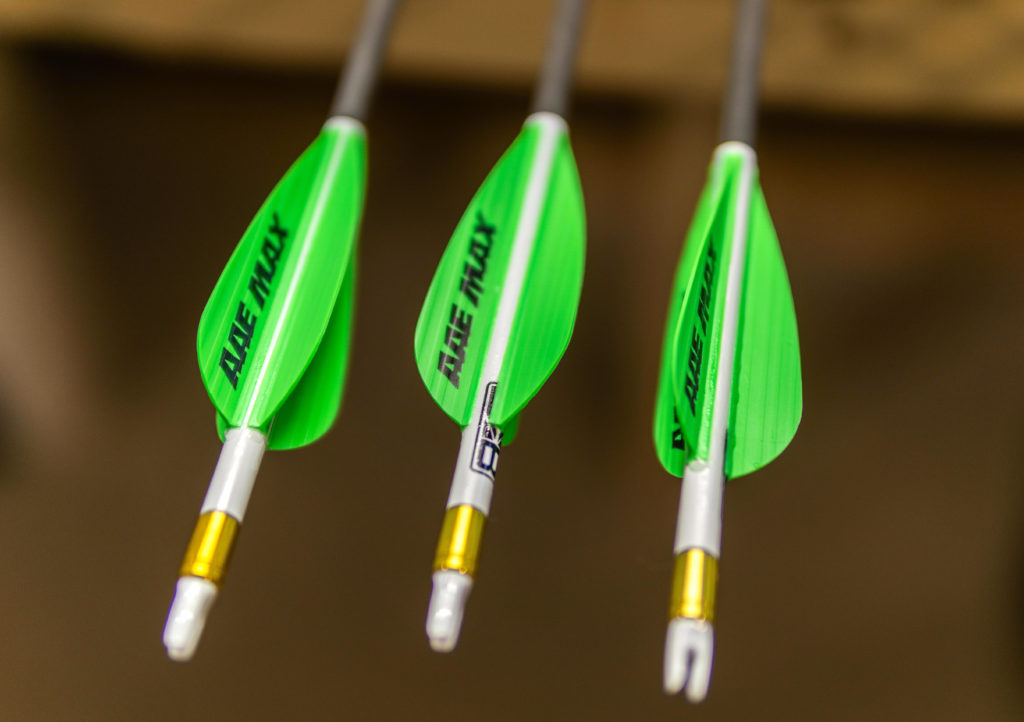
Exhaustive testing has shown that a three vane configuration is the most effective. It provides enough stabilisation to control both yaw and pitch motions. A two vane configuration wouldn’t be sufficient to stabilise the arrow on multiple axes. An excellent analogy is the tail of an aircraft. This controls the horizontal and vertical motions whilst maintaining sleek aerodynamics. Adding more vanes into the equation would increase the control surface area and stability level, but it would also impart more drag. Increased drag would have a negative effect on sight marks which is normally a consideration for most recurve shooters. Having more than three vanes can also lead to encountering bow clearance issues. It’s also believed that a certain amount of air flow between the vanes is needed to get the arrow spinning. A four or six fletch configuration would limit such airflow. As with most technical aspects of archery what we gain on one hand, we lose on another. Therefore, it’s usually the right idea to find your perfect middle ground.
The vanes are designed to be placed with a small offset for maximum efficiency. These have found a lot of favour with field archers due to dealing well with crosswind drift. They also look pretty amazing and are instantly recognisable.
Griffin vanes are a revolutionary twisted ribbon design. Over the years archers have loved the performance and weight saving of spin wings and vanes but never liked the durability aspect. Spin wings come with a heap of maintenance which isn’t pleasurable for everyone.
The Holy Grail for recurve shooting has always been to find a plastic vane that has the durability of a plastic vane with spin wing performance. Bohning believe they have achieved this with the Griffin.
The vane is super lightweight due to the sides being cut out and the reduction in surface area with better air flow should mean any cross wind drift is kept to a minimum. The ribbon top is twisted to manipulate airflow in order to create spin.
It will be exciting to see if these new designs gain market traction and to see what new ideas other manufacturers will come up with in the near future. As most vanes are inexpensive I think it’s a sensible practice to try out different vanes before totally committing to a brand or model.
Ultimately, if you want to really learn every aspect of archery, you will have to try many different arrows and vanes in order to find out what they do and how they work with your shooting.
There really isn’t any substitute for real-world testing under consistent metrics. Try not to succumb to marketing hype or peer pressure. Never forget that both you and your arrows are individual and unique.
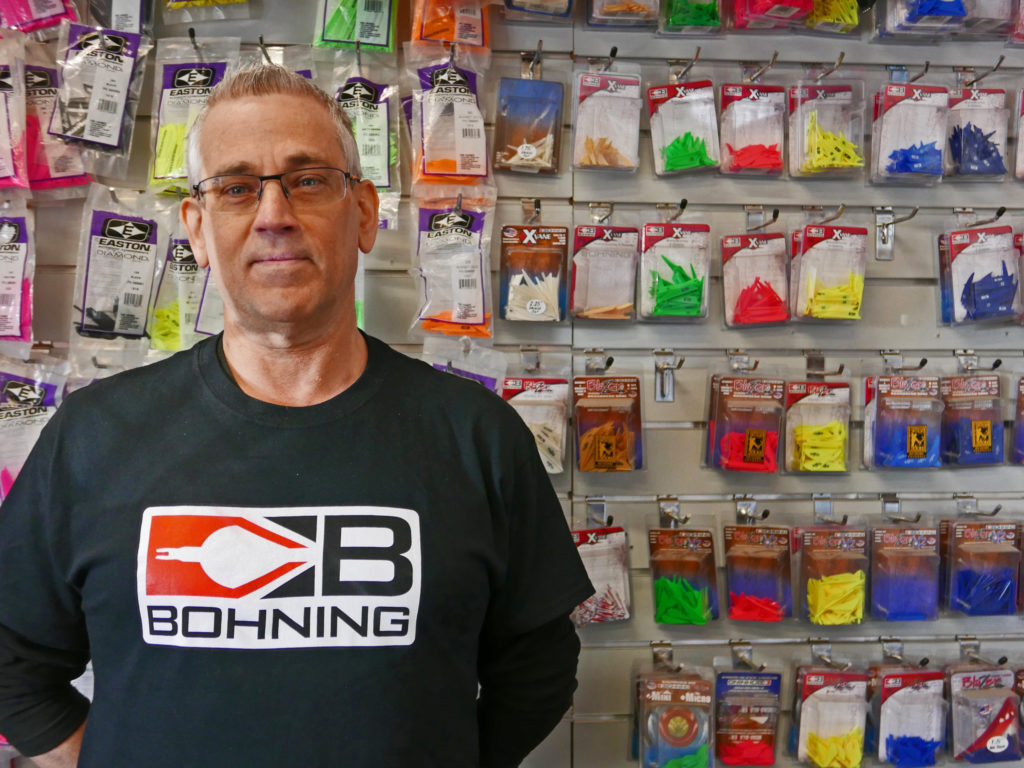


I shoot field archery and like to shoot skinny arrows off of a blade rest. That makes the vane clearances pretty tight. Too much offset and they touch … too little and we don’t get any spin. Does it make sense to fletch the odd vane with a helical or offset but fletch the two down-vanes straight? This would allow for maximum clearance off the blade and still provide some rotation due to the helical top-vane? Any other suggestions would be greatly appreciated. RC
It’s a bad idea. My buddy has arrows fletched identically, but the odd vane is a different color. Side effect is that the odd vane is way softer than the others, and it creates a lot of wobble and whistle. There’s a significant spiraling issue starting at 10 yards, because one side drags more than the others as it spins.
I know it’s a year late to answer your question, but save yourself the headache. Use vanes than can spin with a straight fletch (think Aerovane or quickspin) or change up your shaft/rest combination.
Thank you for the article, being new to archery it has answered a lot of my questions. So in my situation I can only use 2 vanes. And what i have gathered is that since im using only 2 vanes, i should use fairly long ones to make up for the surface area? Possibly a slightly heavier front end? My set up is a bowtech reckoning w/ a fenris magazine.
Can I ask about those amazing arrow wraps in the photo? Where did you get them?
They’re Arrow Socks https://www.arrowsocks.co.uk/